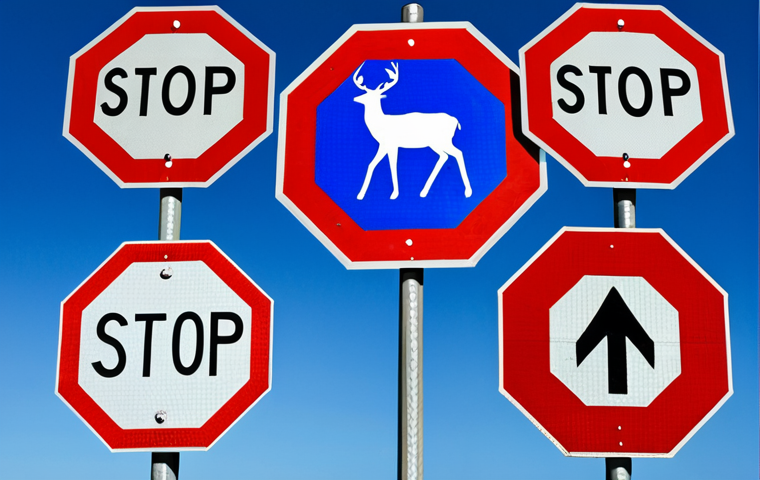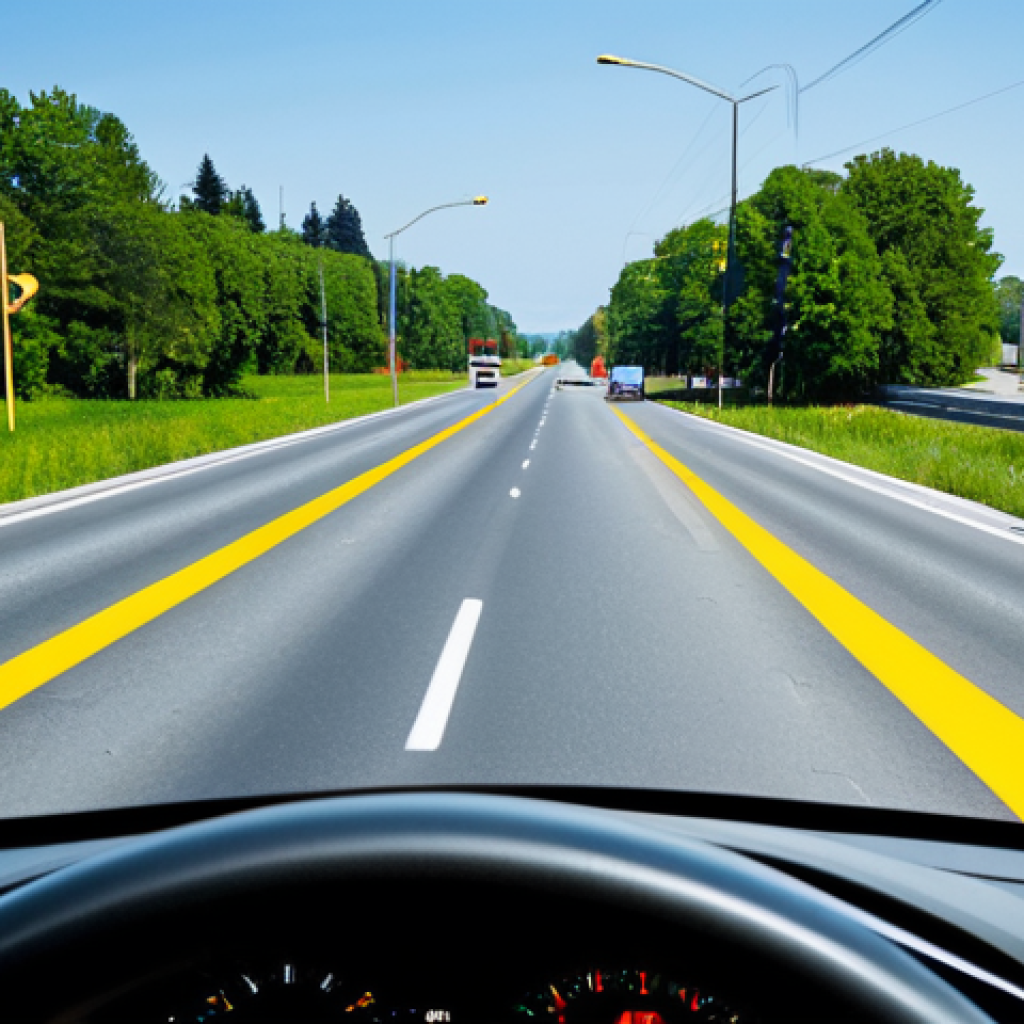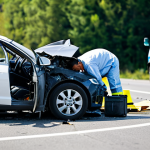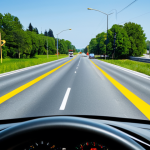Okay, here’s the introductory paragraph for your blog post about conquering the driver’s permit exam, focusing on study strategies for each subject:So, you’re gearing up for your driver’s permit test?
Awesome! But let’s be honest, staring down that study guide can feel a little daunting. I remember when I was prepping for mine, I felt completely overwhelmed.
It’s not just about memorizing facts; it’s about understanding the rules of the road and how to apply them in real-life situations, from navigating tricky intersections to understanding right-of-way rules.
Plus, with the rise of self-driving tech and increasing focus on road safety, understanding these laws is more important than ever. It is important to focus on your weakest subjects and start with those first.
Let’s dive in and get a clearer picture, shall we? We’ll go through subject by subject, so you can plan your study time. Let’s dig deeper to understand how to ace each section!
## Decoding Traffic Signals Like a ProAlright, let’s talk about traffic signals. I remember once I totally blanked on a flashing yellow arrow and almost pulled out in front of an oncoming car!
It was a major wake-up call. So trust me, this section is crucial. Don’t just memorize what each color means; understand the *why* behind it.
1. Mastering the Color Code

Start by drilling yourself on the basic colors: red, yellow, and green. Red means stop, obviously, but knowing *where* to stop (before the crosswalk or stop line) is just as important.
Yellow means caution, prepare to stop if you can do so safely. Green means go, but only if the intersection is clear! Think about how those rules change when you have a flashing yellow or a green arrow.
These nuances are exactly what they’ll test you on. I remember one trick that helped me: picturing real-life scenarios. Imagining myself approaching an intersection with a stale green light (one that’s been green for a while) really helped me solidify the caution aspect.
2. Beyond the Basics: Arrows and Special Cases
Don’t underestimate the arrow signals! A green arrow means you have the right-of-way to turn in that direction, but you still need to yield to pedestrians and other traffic lawfully in the intersection.
Flashing yellow arrows, those are trickier. In my experience, they’re often misinterpreted. It means you can turn in the direction of the arrow, but *only* after yielding to oncoming traffic and pedestrians.
Think of it as a “proceed with caution” signal. Another thing that always trips people up is understanding what to do when a traffic light is out of order – treat it like a four-way stop!
Make sure you approach the intersection cautiously and yield to vehicles on your right.
Signs, Signs, Everywhere are Signs: Knowing What They’re Telling You
Road signs aren’t just decoration; they’re vital for safe driving. When I first started driving, they all blurred together. But trust me, paying attention can save you a lot of headaches, and possibly even prevent accidents.
Understanding sign shapes, colors, and symbols makes them easier to recognize, even at a glance.
1. Shape Shifting: Understanding Sign Categories
Pay attention to the *shape* of the signs. I didn’t realize how helpful this was until someone pointed it out to me. For example, a triangle is usually a yield sign, a circle often indicates a railroad crossing, and a pentagon signals a school zone.
Octagons are exclusively used for stop signs, which is a pretty helpful way to remember what to do. Recognizing shapes alone can give you a heads-up before you can even read the words, especially helpful when driving in unfamiliar areas.
2. Decoding the Color Code
The colors of signs are equally important. Red usually means prohibited or stop, yellow indicates a warning, and green provides directional guidance. Blue is typically used for motorist services, such as rest areas or hospitals.
Brown signs often mark recreational or cultural points of interest. I live near a national park, and I’m constantly relying on those brown signs to find hiking trails!
Learning to quickly associate color with meaning can make you a more aware and responsive driver.
3. Symbol Savvy: Pictograms and What They Mean
Many signs use symbols rather than words, and these can sometimes be confusing. A pedestrian crossing sign with two stick figures might seem obvious, but what about the one with a deer?
That means you’re in an area where deer are likely to cross the road, especially at dawn and dusk. Pay close attention to these symbols and make sure you know what they represent.
The DMV handbook usually has a comprehensive list of all the signs and their meanings, so make sure you review that thoroughly.
Right-of-Way Rules: Who Goes First?
Understanding right-of-way is crucial for avoiding accidents. It’s not about who’s bigger or faster; it’s about knowing the rules.
1. Uncontrolled Intersections: The First-Come, First-Served (Almost) Rule
Uncontrolled intersections, where there are no stop signs or traffic signals, can be tricky. Generally, the vehicle on the right has the right-of-way.
But if you arrive at the intersection at the same time as another vehicle, you should yield to the vehicle on your right. However, if a vehicle is already in the intersection, they have the right-of-way, regardless of which direction they’re coming from.
Remember, it’s always better to be cautious and yield, even if you think you have the right-of-way.
2. Yielding to Pedestrians and Emergency Vehicles
Pedestrians always have the right-of-way, whether they’re in a crosswalk or not. You must yield to pedestrians, even if they’re jaywalking (though they shouldn’t be!).
Emergency vehicles with flashing lights and sirens also have the right-of-way. Pull over to the side of the road and stop until the emergency vehicle has passed.
It’s not just the law; it’s common sense.
Sharing the Road: Bikes, Buses, and Big Rigs
You’re not the only one out there on the road! Remember that cyclists, motorcyclists, buses, and large trucks all share the same space, and each presents unique challenges.
1. Respecting Cyclists’ Space
Bicycles are vehicles too, and cyclists have the same rights and responsibilities as drivers. Give cyclists plenty of space when passing – at least three feet is a good rule of thumb.
Watch out for cyclists turning or changing lanes, and be especially careful at intersections. Remember, cyclists are more vulnerable than drivers of cars, so it’s up to you to be extra cautious.
2. Being Aware of Motorcycles
Motorcycles are smaller and harder to see than cars, so it’s important to be extra vigilant when motorcycles are around. Check your blind spots carefully before changing lanes or turning.
Be aware that motorcycles can accelerate and brake quickly, so maintain a safe following distance.
3. Giving Buses and Trucks Extra Room
Buses and large trucks have significant blind spots and require more room to maneuver. Avoid cutting in front of a bus or truck, as they may not be able to stop in time.
When passing a truck, make sure you can see both of its headlights in your rearview mirror before pulling back into its lane. Be patient and give these larger vehicles the space they need.
Alcohol and Drugs: Know the Risks and the Laws
Driving under the influence is never okay. It impairs your judgment, slows your reaction time, and puts everyone on the road at risk. The legal consequences are severe, but the potential for causing serious harm or death is even more devastating.
1. Understanding BAC and the Effects of Impairment
BAC, or Blood Alcohol Content, is a measure of how much alcohol is in your bloodstream. The legal limit for driving is typically 0.08%, but even a small amount of alcohol can impair your driving ability.
Alcohol affects your vision, coordination, and judgment, making it difficult to react quickly and make safe decisions. Drugs, both illegal and prescription, can also impair your driving ability.
Always read the labels on prescription medications and talk to your doctor about potential side effects.
2. The Consequences of DUI/DWI
Driving under the influence (DUI) or driving while intoxicated (DWI) can result in serious penalties, including fines, jail time, license suspension, and even the installation of an ignition interlock device in your car.
A DUI/DWI conviction can also have long-term consequences, such as increased insurance rates and difficulty finding employment.
Safe Driving Practices: Staying Alert and Avoiding Distractions
Driving safely is about more than just knowing the rules of the road. It’s about staying alert, avoiding distractions, and making smart decisions behind the wheel.
1. Eliminating Distractions: Phone Down, Eyes Up
Distracted driving is one of the leading causes of accidents. Cell phones are a major culprit, but anything that takes your attention away from the road can be dangerous.
Avoid texting, talking on the phone (even hands-free), eating, or adjusting the radio while driving. If you need to do any of these things, pull over to a safe location first.
2. Managing Fatigue: Get Enough Rest
Drowsy driving is just as dangerous as driving under the influence. Fatigue impairs your reaction time and judgment, making it difficult to stay focused on the road.
Get plenty of sleep before driving, especially on long trips. If you start to feel drowsy while driving, pull over to a safe location and take a break or switch drivers.
3. Maintaining a Safe Following Distance
Following too closely is a common cause of rear-end collisions. Maintain a safe following distance of at least three seconds behind the vehicle in front of you.
Increase your following distance in bad weather or when driving behind large vehicles. Here is a sample table about common traffic sign shapes and their meanings:
| Shape | Meaning | Example |
|---|---|---|
| Octagon | Stop | Stop Sign |
| Triangle (inverted) | Yield | Yield Sign |
| Diamond | Warning | Construction Zone, Pedestrian Crossing |
| Circle | Railroad Crossing | Railroad Crossing Sign |
| Pentagon | School Zone | School Crossing |
| Rectangle | Regulatory or Guide | Speed Limit, Route Marker |
Decoding Traffic Signals Like a Pro
Alright, let’s talk about traffic signals. I remember once I totally blanked on a flashing yellow arrow and almost pulled out in front of an oncoming car! It was a major wake-up call. So trust me, this section is crucial. Don’t just memorize what each color means; understand the why behind it.
1. Mastering the Color Code
Start by drilling yourself on the basic colors: red, yellow, and green. Red means stop, obviously, but knowing where to stop (before the crosswalk or stop line) is just as important. Yellow means caution, prepare to stop if you can do so safely. Green means go, but only if the intersection is clear! Think about how those rules change when you have a flashing yellow or a green arrow. These nuances are exactly what they’ll test you on. I remember one trick that helped me: picturing real-life scenarios. Imagining myself approaching an intersection with a stale green light (one that’s been green for a while) really helped me solidify the caution aspect.
2. Beyond the Basics: Arrows and Special Cases
Don’t underestimate the arrow signals! A green arrow means you have the right-of-way to turn in that direction, but you still need to yield to pedestrians and other traffic lawfully in the intersection. Flashing yellow arrows, those are trickier. In my experience, they’re often misinterpreted. It means you can turn in the direction of the arrow, but only after yielding to oncoming traffic and pedestrians. Think of it as a “proceed with caution” signal. Another thing that always trips people up is understanding what to do when a traffic light is out of order – treat it like a four-way stop! Make sure you approach the intersection cautiously and yield to vehicles on your right.
Signs, Signs, Everywhere are Signs: Knowing What They’re Telling You
Road signs aren’t just decoration; they’re vital for safe driving. When I first started driving, they all blurred together. But trust me, paying attention can save you a lot of headaches, and possibly even prevent accidents. Understanding sign shapes, colors, and symbols makes them easier to recognize, even at a glance.
1. Shape Shifting: Understanding Sign Categories
Pay attention to the shape of the signs. I didn’t realize how helpful this was until someone pointed it out to me. For example, a triangle is usually a yield sign, a circle often indicates a railroad crossing, and a pentagon signals a school zone. Octagons are exclusively used for stop signs, which is a pretty helpful way to remember what to do. Recognizing shapes alone can give you a heads-up before you can even read the words, especially helpful when driving in unfamiliar areas.
2. Decoding the Color Code
The colors of signs are equally important. Red usually means prohibited or stop, yellow indicates a warning, and green provides directional guidance. Blue is typically used for motorist services, such as rest areas or hospitals. Brown signs often mark recreational or cultural points of interest. I live near a national park, and I’m constantly relying on those brown signs to find hiking trails! Learning to quickly associate color with meaning can make you a more aware and responsive driver.
3. Symbol Savvy: Pictograms and What They Mean
Many signs use symbols rather than words, and these can sometimes be confusing. A pedestrian crossing sign with two stick figures might seem obvious, but what about the one with a deer? That means you’re in an area where deer are likely to cross the road, especially at dawn and dusk. Pay close attention to these symbols and make sure you know what they represent. The DMV handbook usually has a comprehensive list of all the signs and their meanings, so make sure you review that thoroughly.
Right-of-Way Rules: Who Goes First?
Understanding right-of-way is crucial for avoiding accidents. It’s not about who’s bigger or faster; it’s about knowing the rules.
1. Uncontrolled Intersections: The First-Come, First-Served (Almost) Rule
Uncontrolled intersections, where there are no stop signs or traffic signals, can be tricky. Generally, the vehicle on the right has the right-of-way. But if you arrive at the intersection at the same time as another vehicle, you should yield to the vehicle on your right. However, if a vehicle is already in the intersection, they have the right-of-way, regardless of which direction they’re coming from. Remember, it’s always better to be cautious and yield, even if you think you have the right-of-way.
2. Yielding to Pedestrians and Emergency Vehicles
Pedestrians always have the right-of-way, whether they’re in a crosswalk or not. You must yield to pedestrians, even if they’re jaywalking (though they shouldn’t be!). Emergency vehicles with flashing lights and sirens also have the right-of-way. Pull over to the side of the road and stop until the emergency vehicle has passed. It’s not just the law; it’s common sense.
Sharing the Road: Bikes, Buses, and Big Rigs
You’re not the only one out there on the road! Remember that cyclists, motorcyclists, buses, and large trucks all share the same space, and each presents unique challenges.
1. Respecting Cyclists’ Space
Bicycles are vehicles too, and cyclists have the same rights and responsibilities as drivers. Give cyclists plenty of space when passing – at least three feet is a good rule of thumb. Watch out for cyclists turning or changing lanes, and be especially careful at intersections. Remember, cyclists are more vulnerable than drivers of cars, so it’s up to you to be extra cautious.
2. Being Aware of Motorcycles
Motorcycles are smaller and harder to see than cars, so it’s important to be extra vigilant when motorcycles are around. Check your blind spots carefully before changing lanes or turning. Be aware that motorcycles can accelerate and brake quickly, so maintain a safe following distance.
3. Giving Buses and Trucks Extra Room
Buses and large trucks have significant blind spots and require more room to maneuver. Avoid cutting in front of a bus or truck, as they may not be able to stop in time. When passing a truck, make sure you can see both of its headlights in your rearview mirror before pulling back into its lane. Be patient and give these larger vehicles the space they need.
Alcohol and Drugs: Know the Risks and the Laws
Driving under the influence is never okay. It impairs your judgment, slows your reaction time, and puts everyone on the road at risk. The legal consequences are severe, but the potential for causing serious harm or death is even more devastating.
1. Understanding BAC and the Effects of Impairment
BAC, or Blood Alcohol Content, is a measure of how much alcohol is in your bloodstream. The legal limit for driving is typically 0.08%, but even a small amount of alcohol can impair your driving ability. Alcohol affects your vision, coordination, and judgment, making it difficult to react quickly and make safe decisions. Drugs, both illegal and prescription, can also impair your driving ability. Always read the labels on prescription medications and talk to your doctor about potential side effects.
2. The Consequences of DUI/DWI
Driving under the influence (DUI) or driving while intoxicated (DWI) can result in serious penalties, including fines, jail time, license suspension, and even the installation of an ignition interlock device in your car. A DUI/DWI conviction can also have long-term consequences, such as increased insurance rates and difficulty finding employment.
Safe Driving Practices: Staying Alert and Avoiding Distractions
Driving safely is about more than just knowing the rules of the road. It’s about staying alert, avoiding distractions, and making smart decisions behind the wheel.
1. Eliminating Distractions: Phone Down, Eyes Up
Distracted driving is one of the leading causes of accidents. Cell phones are a major culprit, but anything that takes your attention away from the road can be dangerous. Avoid texting, talking on the phone (even hands-free), eating, or adjusting the radio while driving. If you need to do any of these things, pull over to a safe location first.
2. Managing Fatigue: Get Enough Rest
Drowsy driving is just as dangerous as driving under the influence. Fatigue impairs your reaction time and judgment, making it difficult to stay focused on the road. Get plenty of sleep before driving, especially on long trips. If you start to feel drowsy while driving, pull over to a safe location and take a break or switch drivers.
3. Maintaining a Safe Following Distance
Following too closely is a common cause of rear-end collisions. Maintain a safe following distance of at least three seconds behind the vehicle in front of you. Increase your following distance in bad weather or when driving behind large vehicles.
Here is a sample table about common traffic sign shapes and their meanings:
| Shape | Meaning | Example |
|---|---|---|
| Octagon | Stop | Stop Sign |
| Triangle (inverted) | Yield | Yield Sign |
| Diamond | Warning | Construction Zone, Pedestrian Crossing |
| Circle | Railroad Crossing | Railroad Crossing Sign |
| Pentagon | School Zone | School Crossing |
| Rectangle | Regulatory or Guide | Speed Limit, Route Marker |
Wrapping Up
Driving safely is a lifelong journey, not just a destination. Stay informed, stay alert, and always prioritize safety. The road is a shared space, and our actions impact everyone around us. Drive responsibly, and arrive alive.
Good to Know Info
1. Always check your mirrors before changing lanes or making a turn.
2. Use your turn signals to communicate your intentions to other drivers.
3. Adjust your driving to the weather conditions – slow down in rain, snow, or fog.
4. Be aware of your surroundings and anticipate potential hazards.
5. Regularly check your vehicle’s tire pressure and fluid levels.
Key Takeaways
• Understand traffic signals and road signs thoroughly.
• Know the right-of-way rules and yield when necessary.
• Share the road responsibly with cyclists, motorcyclists, buses, and trucks.
• Never drive under the influence of alcohol or drugs.
• Eliminate distractions and stay alert while driving.
Frequently Asked Questions (FAQ) 📖
Q: I’m really struggling with understanding the rules about right-of-way at intersections.
A: ny tips? A1: I get it, right-of-way can be tricky! What helped me was visualizing real-life scenarios.
Imagine you’re actually approaching different types of intersections: four-way stops, uncontrolled intersections, those with yield signs, and with traffic lights.
Draw it out, literally! Sketch the scenarios and write down who has the right-of-way in each case. Also, check if your state’s DMV offers online practice quizzes specifically on right-of-way.
Often those have illustrations and the answers give a much better sense for why one has the right of way.
Q: What’s the best way to memorize all those numbers and statistics about alcohol limits and penalties? My memory is terrible!
A: Totally understandable! Numbers can be a pain. Instead of just rote memorization, try to connect them to real-world consequences.
For example, instead of just knowing the legal BAC limit, research case studies or news articles about DUIs and how those numbers impacted real people.
Or, create a catchy mnemonic device or song. Make the numbers meaningful in some way. Flashcards can also be helpful, but focus on associating the number with the consequences.
Also, quiz yourself right before you go to sleep. Studies show that helps with memory retention.
Q: The section on road signs is HUGE! I feel like there are a million different signs. How can I possibly remember them all?
A: Ugh, yes, road signs! That section feels endless, I agree. The best way to tackle it is to group them by type: regulatory, warning, guide signs, etc.
Then, focus on the shapes and colors, which are clues. For example, warning signs are usually yellow and diamond-shaped. Regulatory signs are often white with black letters.
Then, actively look for these signs when you’re driving (or even riding as a passenger). Point them out and say what they mean. That real-world practice will help them stick in your memory far better than just looking at them in a book.
Use online quizzes or apps to test your knowledge and identify any gaps.
📚 References
Wikipedia Encyclopedia






